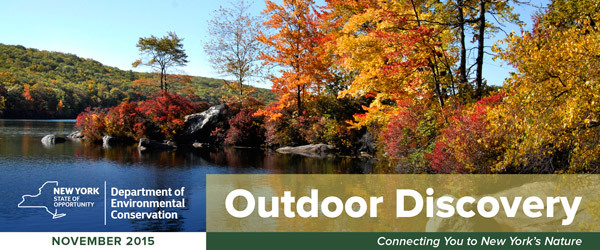|
Hike of the Month: Clarence Fahnestock Memorial State Park
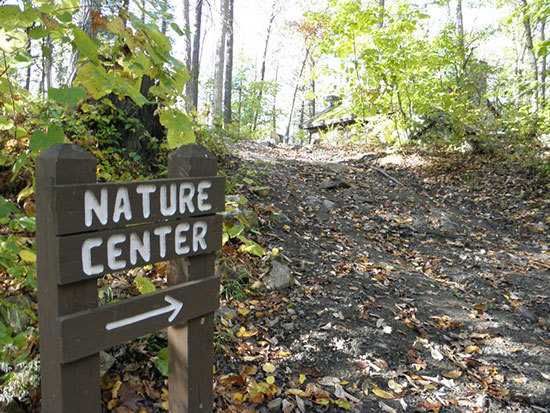
Dutchess and Putnam Counties
Clarence Fahnestock Memorial State Park is a delight for hikers. In fact, part of the Appalachian Trail runs through this 14,086-acre park. It includes 50 miles of marked trails, most of which have rocky sections and are moderately strenuous. Dogs on leashes not more than 10 feet long are permitted on the trails. At Fahnestock Winter Park, there are 15 km of groomed trails for cross-country skiing and snowshoeing. Remnants of the region's historic iron-mining industry include mine excavations, stone foundations, and old railbeds used by some trails. Dr. Ernest Fahnestock donated some of the original land for the park, about 2,400 acres, in memory of his brother Clarence, who died in the post-World War I influenza epidemic.
Watchable Wildlife: Roger Tory Peterson Institute of Natural History
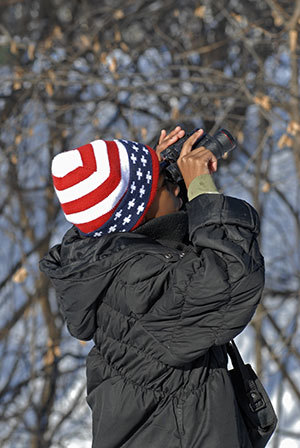
Chautauqua County
Named for the naturalist, artist and author of a popular field guide series, the Roger Tory Peterson Institute of Natural History is dedicated to instilling in visitors an appreciation and understanding of the natural world. The institute houses a museum and galleries showcasing Peterson's iconic paintings of birds. The site of the institute encompasses 27 acres on which an interpretive trail winds through forest, field and marsh. While walking along this trail, you might see amphibians, reptiles, waterfowl, owls, wading birds, raptors, game birds, songbirds, small mammals and white-tailed deer, depending on the time of year. Using a (Peterson, of course) field guide and a pair of binoculars during your walk will help enhance your wildlife viewing.
Nature Notes
Great horned owls are fierce predators with an appetite for skunks (an unusual yet regular part of their diet), birds (hawks and waterfowl) and mammals (commonly mouse to rabbit size).
Rattlesnake Hill Great for Fall Hunting
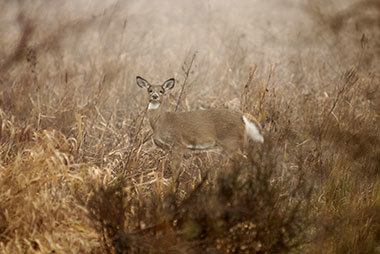
Livingston and Allegany Counties
Rattlesnake Hill Wildlife Management Area has more than 5,000 acres of woods, fields, old orchards and meadows for both big and small game hunting. Bow and rifle hunters come for white-tailed deer. Grey squirrel and cottontail rabbit are plentiful throughout the area. November is too late for wild turkey, but waterfowl hunters will find geese and ducks in several marshes. Woodcock can be flushed from thickets at the margins of wetlands. Ruffed grouse also hide deep in the woods and thick brush patches. Several roads access the property, and many trails also run throughout the area. One trail leads to a campsite and privy; camping is by permit only and restricted to organized groups. A cartop boat launch is located at the southern end of the property. See DEC's Rattlesnake Hill webpage for more information.
Steelhead Fishing in Lake Erie Tributaries
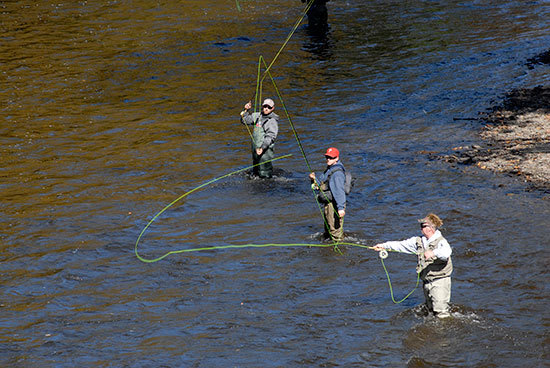
Each fall, large migratory rainbow trout, or steelhead , start making their way up many of Lake Erie's tributary streams. Steelhead action builds during October and lasts through April, with prime fishing usually occurring in November, December and March. Due to the strength and agility of steelhead, there is little that can match the exhilarating fight of a large one. Top steelhead streams include Cattaraugus, Chautauqua, Canadaway and Eighteenmile creeks; however, steelhead will run any stream with adequate water flow.
Visit DEC's Steelhead Fishing in Lake Erie Tributaries for more information on Lake Erie steelhead, suggested fishing equipment and fishing locations. Print a Public Fishing Rights Map for a handy reference when in the field.
Safe and Sound
When fishing in colder weather, proper clothing is critical because most people do not move around much. Dress warmly, paying extra attention to your head, feet and hands; dressing in layers is essential.
Upcoming DEC Events
-
Regular Big Game Season, Southern Zone, opens Saturday, November 21
- Guided Walk: Beaver Tree Trail, Saturday, November 21 at 10:00 AM, Five Rivers
-
Long Island Turkey Season opens Saturday, November 21
- Open House: What is It? Solving Your Natural History Mysteries, Saturday, November 28 at 10:00 AM, Five Rivers
Conservationist Magazine

Can you tell what's pictured here? Hint: see page 25 of the October Conservationist. Also in this issue: join biologists collaring Adirondack moose, play peek-a-boo with an owl, check out the incredible trail cam photo of two dancing bears, accompany Stephanie Lorraine of Sauquoit as she bags her first buck with her dad at her side, and revel in the autumn splendor of bird dogs and fall foliage. We've also got the Big Buck Club awards for this year. All this and more in the October Conservationist. Subscribe online or call 1-800-678-6399.
|


